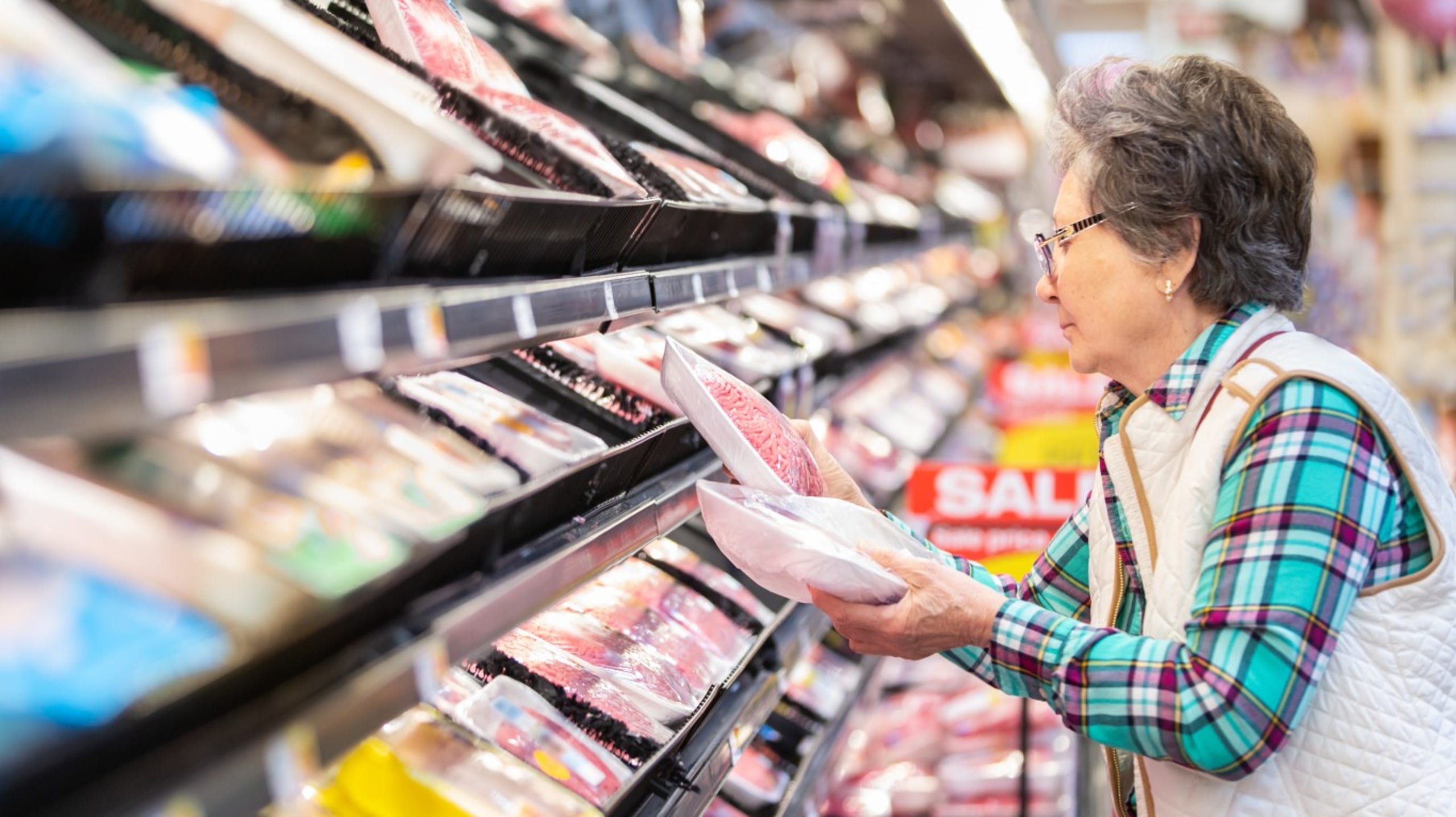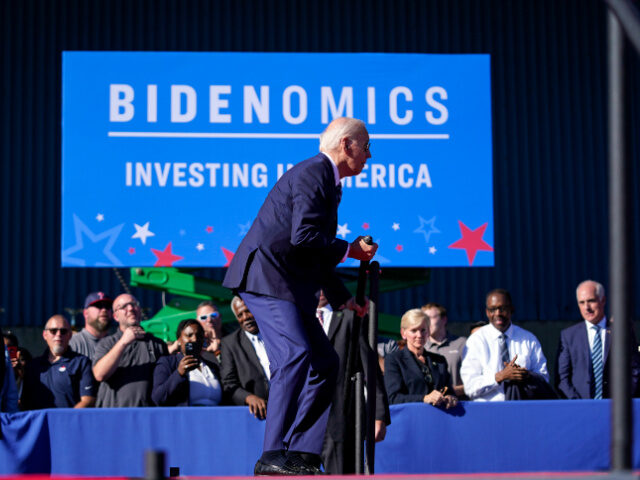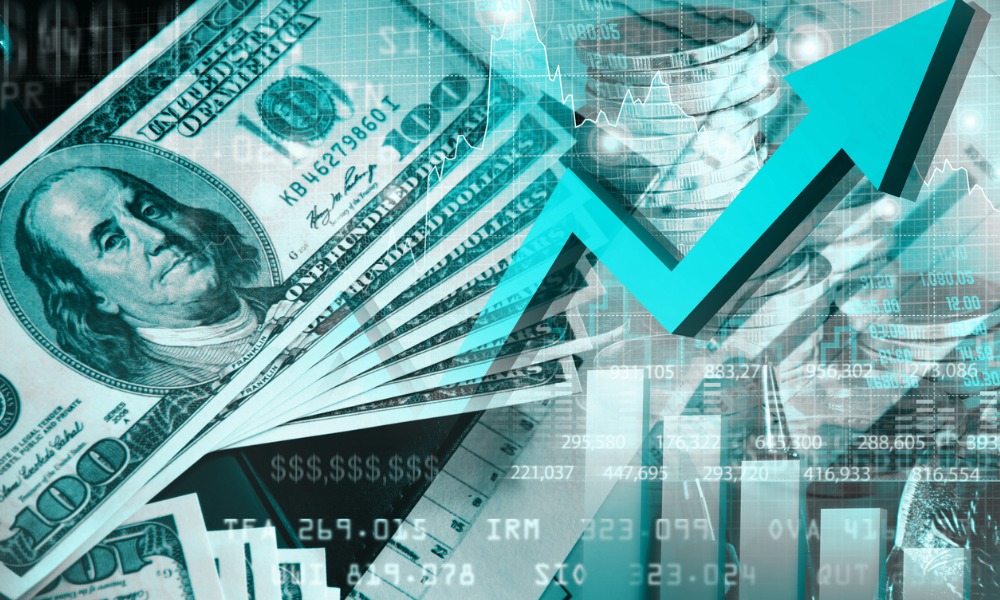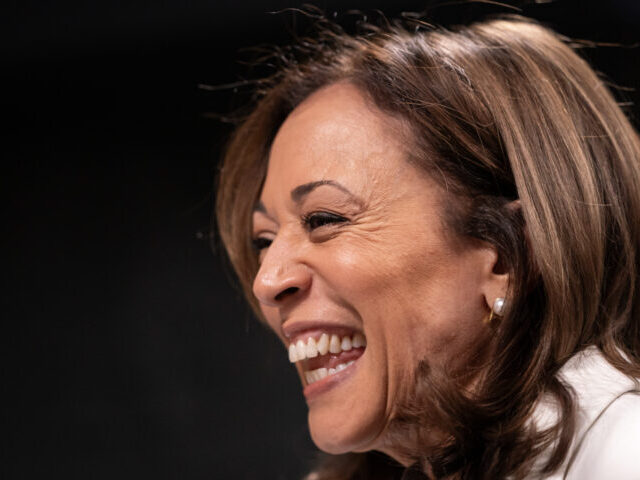from Money & Macro
Fed’s Preferred Inflation Gauge Cools, Adding to Likelihood of a September Rate Cut
The Federal Reserve’s favored inflation measure remained low last month, bolstering evidence that price pressures are steadily cooling and setting the stage for the Fed to begin cutting interest rates in September
by Christopher Rugaber
ABC News
 WASHINGTON — The Federal Reserve’s favored inflation measure remained low last month, bolstering evidence that price pressures are steadily cooling and setting the stage for the Fed to begin cutting interest rates in September.
WASHINGTON — The Federal Reserve’s favored inflation measure remained low last month, bolstering evidence that price pressures are steadily cooling and setting the stage for the Fed to begin cutting interest rates in September.
Prices rose just 0.1% from May to June, the Commerce Department said Friday, up from the previous month’s unchanged reading. Compared with a year earlier, inflation declined to 2.5% from 2.6%.
Excluding volatile food and energy prices, so-called core inflation rose 0.2% from May to June, up from the previous month’s 0.1%. Measured from one year earlier, core prices increased 2.6%, unchanged from June. Economists closely watch core prices, which typically provide a better read of future inflation trends.
Inflation Rankings Flip: Northeast Has Largest Price Jumps, South and West Cool Off
by Paul Davidson
USA Today
 The nation’s regional inflation rankings have turned upside down.
The nation’s regional inflation rankings have turned upside down.
For years, inflation has been higher in the South and West because Americans flocked to those areas for their temperate climates and lower costs, driving strong consumer demand and higher prices.
That trend was amplified by the pandemic. As remote work spread, many people streamed out of densely populated Northeastern and Midwestern cities like New York and Chicago for less costly areas with lots of open spaces, like Tennessee’s Nashville and Idaho’s Boise.
But the pecking order has reshuffled.
Consumers’ Mixed Economic Sentiments Hurt by Inflation, Lifted by Labor
from PYMNTS
 As consumers look at their economic prospects, they are torn between factors pulling them in different directions, feeling relatively confident about the job market but remaining deeply concerned about rising prices.
As consumers look at their economic prospects, they are torn between factors pulling them in different directions, feeling relatively confident about the job market but remaining deeply concerned about rising prices.
Confidence Ekes Upward
The Conference Board Consumer Confidence Index rose modestly in July, signaling mixed sentiments among U.S. consumers. The index increased to 100.3 from a revised 97.8 in June. This uptick, however, masks underlying concerns. The Present Situation Index, which evaluates current business and labor market conditions, dropped to 133.6 from 135.3, indicating that consumers perceive the present economic situation as slightly deteriorating.
A Former Fed Official Finally Tells the Truth About Inflation…
by James Hickman
Schiff Sovereign
 My sister used to be a reporter for Fox News based in south Florida and would regularly be assigned to cover NASA press conferences.
My sister used to be a reporter for Fox News based in south Florida and would regularly be assigned to cover NASA press conferences.
And she’s often told me about how reporters were terrified to ask any real questions. They’re not astrophysicists and don’t understand the first thing about rocket propulsion, and most of the journalists never bothered to learn even the basics of the topic.
So, the majority of the questions were very superficial; quite simply the reporters didn’t want to embarrass themselves.
This is how the media covers the Federal Reserve. Most reporters don’t have a clue about central banking, so, not wanting to look stupid, they just sit quietly and give the Fed a pass. There’s no real scrutiny.
Kamala Harris Insisted “Bidenomics’ Worked While Costs Soared
by Wendell Husebo
Breitbart.com
 Vice President Kamala Harris championed the administration’s so-called “Bidenomics” as costs dramatically soared for American families.
Vice President Kamala Harris championed the administration’s so-called “Bidenomics” as costs dramatically soared for American families.
Costs increased on average across the board by about 20 percent under the Biden-Harris administration. Popeyes, Taco Bell, and Chipotle, for example, raised prices by at least 75 percent, according to the Food Institute.
At least five times Harris praised the policies that fueled the rising costs:
- July 24, 2023: “Bidenomics is working”
- August 3, 2023: “Bidenomics is working”
- August 4, 2023: “Bidenomics is working”
- August 8, 2023: “Bidenomics is working”
- August 15, 2023: “Bidenomics is working”
Harris will have a difficult time convincing voters to believe that the administration is doing a good job on the economy, the number one issue for voters.
Beware of Conflict Theories of Inflation
by Nicolás Cachanosky
The American Institute for Economic Research
 In recent years, the resurgence of inflation in the United States and other advanced economies has brought a revival of conflict theories of inflation (CTIs). These theories, which are gaining momentum in academic and policy-making circles as well as the popular press, posit that inflation is fundamentally the result of distributional conflicts among various social groups. The historical roots of CTI reveal their policy implications. For instance, Elizabet Warren has spearheaded initiatives rooted on CTI ideas such as Shrinkflation Prevention-Act and the Price Gauging Act of 2024. The “greedflation” narrative, so popular in recent years by Isabella Weber, is another example of CTI-inspired rationale surrounding higher-than-normal inflation.
In recent years, the resurgence of inflation in the United States and other advanced economies has brought a revival of conflict theories of inflation (CTIs). These theories, which are gaining momentum in academic and policy-making circles as well as the popular press, posit that inflation is fundamentally the result of distributional conflicts among various social groups. The historical roots of CTI reveal their policy implications. For instance, Elizabet Warren has spearheaded initiatives rooted on CTI ideas such as Shrinkflation Prevention-Act and the Price Gauging Act of 2024. The “greedflation” narrative, so popular in recent years by Isabella Weber, is another example of CTI-inspired rationale surrounding higher-than-normal inflation.
The rising popularity of CTIs can be seen in the public discourse on “greedflation,” where inflation is attributed to corporate greed. In academia, influential figures such as Olivier Blanchard have echoed similar sentiments.
Wall Street Climbs as Inflation Data Sparks Rate Cut Hopes
Stocks surged Friday with positive US inflation data boosting investor confidence in potential rate cuts
by Freschia Gonzales
Wealth Professional

Stocks soared on Friday, ending a volatile week on a high note as investors considered fresh US inflation data, according to CNBC.
The Dow Jones Industrial Average surged 654.27 points, or 1.64 percent, closing at 40,589.34. The S&P 500 increased by 1.11 percent to 5,459.10, while the Nasdaq Composite rose 1.03 percent, finishing at 17,357.88.
CFRA Research’s Sam Stovall noted that Friday’s gains resulted from oversold sentiment, a robust GDP report on Thursday, and expectations that the Federal Reserve will cut rates due to economic strength.
“Today’s benign PCE report helped talk the market off the ledge,” he said. “With this pullback, the great rotation lives on, and breadth continues to be on our side.”
Harris Freshens Up Her Message On the Economy as Trump and Republicans Go After Her On Inflation
Since President Joe Biden left the White House race, Vice President Kamala Harris has begun to craft her own narrative around the economy
by Josh Boak
ABC News
 WASHINGTON — All of a sudden it’s Kamala Harris ‘ economy — a major opportunity as well as a possible risk for the likely Democratic presidential nominee.
WASHINGTON — All of a sudden it’s Kamala Harris ‘ economy — a major opportunity as well as a possible risk for the likely Democratic presidential nominee.
Shortly after President Joe Biden left the race a week ago, Harris began to craft her own narrative around the economy by putting an emphasis on ending child poverty, promoting labor unions, reducing the costs of health and child care and protecting “dignity” in retirement.
Not once in speeches in Wisconsin, Indiana or Texas did she mention the word “inflation” — the overwhelming economic challenge that has dogged Biden’s administration and forced him in remarks to consistently acknowledge voters’ pain as they cope with higher grocery, gasoline, housing and auto expenses.
Harris is putting a bigger priority on what she says could be ahead.
Consumer Sentiment Hits Eight-Month Low Amid Inflation Woes
by John Carney
Breitbart.com
 US consumer sentiment dropped in July to its lowest level in eight months as persistent high prices and stubbornly high inflation continued to erode confidence in personal finances.
US consumer sentiment dropped in July to its lowest level in eight months as persistent high prices and stubbornly high inflation continued to erode confidence in personal finances.
According to the University of Michigan, the final July sentiment index fell to 66.4 from 68.2 in June. The preliminary reading for the month had been 66, indicating a downward trend in consumer confidence.
Consumer sentiment has been mired at a low level for the past three months, as households’ views of the economy remain extraordinarily negative.
Consumers now expect prices to rise at an annual rate of 2.9 percent over the next year, marking the lowest expectation in four months and slightly down from the 3 percent anticipated in June. Over the next five to ten years, Americans see costs climbing at an average of 3 percent, unchanged from the previous month.
Inequality is Caused by Inflation
by Lennart Wagemans
Mises.org
 Many claim the problem with fractional reserve banking is that it loans money into existence. It does, but under normal circumstances the money created by commercial banks disappears when loans are repaid or defaulted on, which therefore doesn’t create a permanent inflation of the money supply. Government intervention, however, converts temporary money into permanent money through bailouts like the Troubled Asset Relief Program. They purchase loans that would have been defaulted on, preventing the evaporation of credit. When banks hold loans that are at risk of default, they face having to write them off, which would remove this part of the money supply. Bailouts turn such disappearing credit into permanent money, in effect giving banks free money.
Many claim the problem with fractional reserve banking is that it loans money into existence. It does, but under normal circumstances the money created by commercial banks disappears when loans are repaid or defaulted on, which therefore doesn’t create a permanent inflation of the money supply. Government intervention, however, converts temporary money into permanent money through bailouts like the Troubled Asset Relief Program. They purchase loans that would have been defaulted on, preventing the evaporation of credit. When banks hold loans that are at risk of default, they face having to write them off, which would remove this part of the money supply. Bailouts turn such disappearing credit into permanent money, in effect giving banks free money.
Without government bailouts, banks would be unwilling to make loans that are unlikely to be repaid, thus limiting their willingness to loan large amounts of money into existence. This would keep the money supply more stable. At any time, some part of the money in existence would still be destined for removal through repayment. This proportion would somewhat fluctuate with economic conditions, and the temporary money would be indistinguishable from other money until a loan is repaid, but new money would not continually get loaned into existence.
